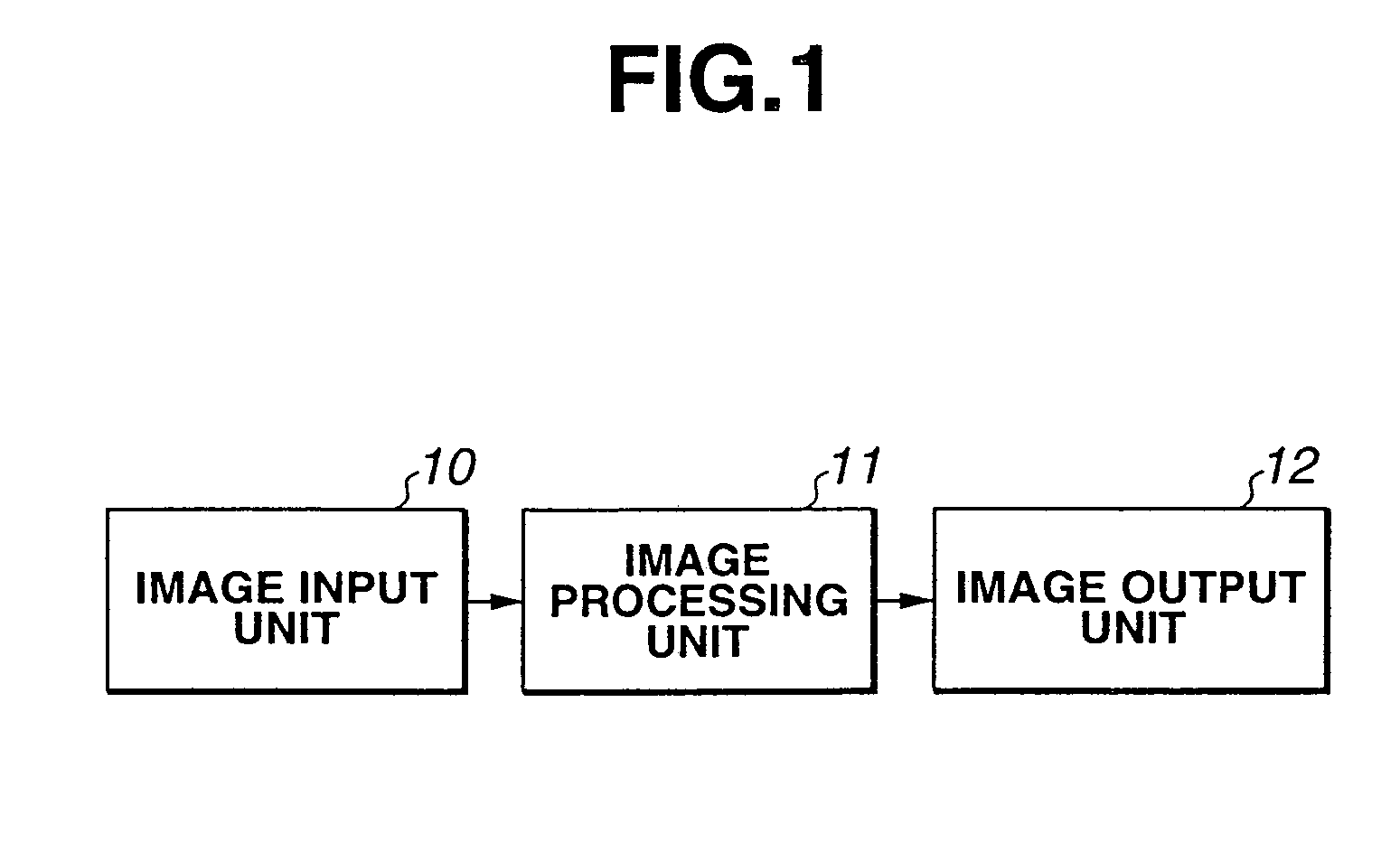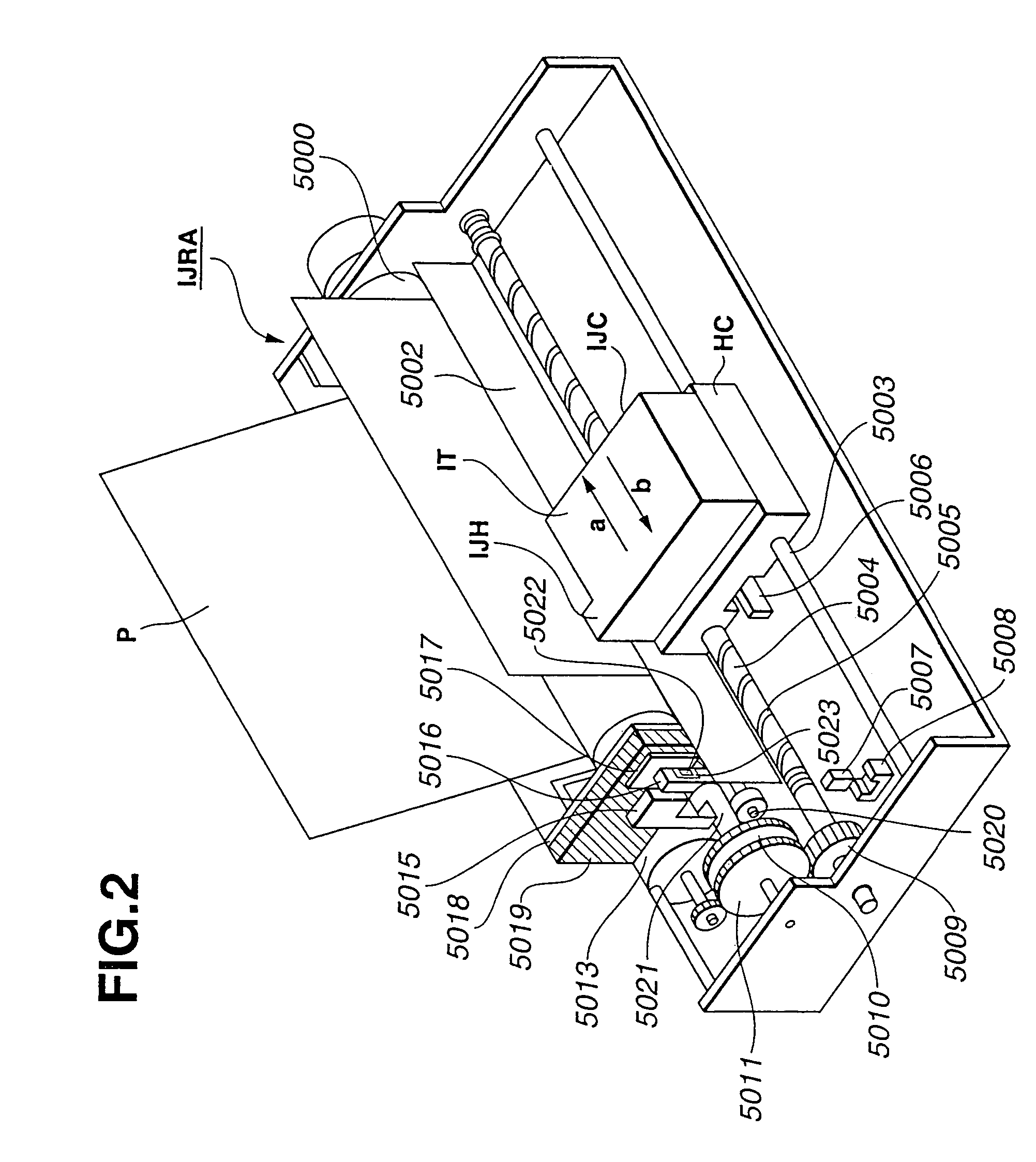Image recording apparatus, image recording method, method for controlling the image recording apparatus, storage medium storing a program capable of being read by a computer, and image processing method
a technology for recording apparatus and image, which is applied in the direction of image enhancement, colour separation/tonal correction, instruments, etc., can solve the problems of inability to sufficiently prevent the degradation of image quality, and the size of each dot pattern is reduced. , to achieve the effect of reducing the capacity of dot-pattern tables and the cost of the apparatus
- Summary
- Abstract
- Description
- Claims
- Application Information
AI Technical Summary
Benefits of technology
Problems solved by technology
Method used
Image
Examples
first embodiment
[0119]FIG. 1 is a schematic block diagram illustrating the configuration of an image processing system according to a first embodiment of the present invention.
[0120]In FIG. 1, an image input unit 10 inputs multi-valued image data from an image input apparatus, such as a scanner, a digital camera or the like, or multi-valued image data stored in each type of storage medium, such as a hard disk or the like. An image processing unit 11 performs image processing (to be described later) for the multi-valued image data input by the image input unit 10, to convert the multi-valued image data into a binary image data. An image output unit 12 receives the binary image data from the image processing unit 11, and performs actual image formation. Although not illustrated in FIG. 1, each of the units constituting the system includes a CPU (central processing unit) for controlling operations of the unit itself and linked operations with other units, a ROM (read-only memory) storing control progr...
second embodiment
[0184]In a second embodiment of the present invention, a multi-path recording method, in which recording on the same region of a recording medium is completed by performing scanning of the region by a recording head a plurality of times, is executed. In order to simplify the description, a case in which the same region is scanned twice will be described. Since the second embodiment is the same as the above-described first embodiment except that the multi-path recording method is executed, the above-described FIGS. 1-5, and FIGS. 8-12 can also be applied to the second embodiment. Hence, further description thereof will be omitted.
[0185]FIG. 13 is a schematic diagram illustrating how two-path recording is performed.
[0186]As shown in FIG. 13, every time the recording head performs one scanning operation, the recording medium is conveyed by ½ of the recording width of the recording head, so that recording is completed by two scanning operations on the same region of the recording medium...
third embodiment
[0192]A third embodiment of the present invention will now be described.
[0193]FIG. 23 is a block diagram illustrating the configuration of an image recording apparatus according to the third embodiment.
[0194]In FIG. 23, reference numeral 100 represents the entire image recording apparatus. An image input unit 101 inputs multi-valued image data from an image input apparatus, such as a scanner, a digital camera, or the like, or multi-valued image data stored in each type of storage medium, such as a hard disk, or the like. An image processing unit 102 performs image processing (to be described later) for the multi-valued image data input by the image input unit 101, to convert the multi-valued image data into a binary image data. An image recording unit 103 receives the binary image data from the image processing unit 102, and performs actual image formation. Although not illustrated in FIG. 23, the operations and linked operations with other units of the units constituting the image ...
PUM
 Login to View More
Login to View More Abstract
Description
Claims
Application Information
 Login to View More
Login to View More - R&D
- Intellectual Property
- Life Sciences
- Materials
- Tech Scout
- Unparalleled Data Quality
- Higher Quality Content
- 60% Fewer Hallucinations
Browse by: Latest US Patents, China's latest patents, Technical Efficacy Thesaurus, Application Domain, Technology Topic, Popular Technical Reports.
© 2025 PatSnap. All rights reserved.Legal|Privacy policy|Modern Slavery Act Transparency Statement|Sitemap|About US| Contact US: help@patsnap.com



